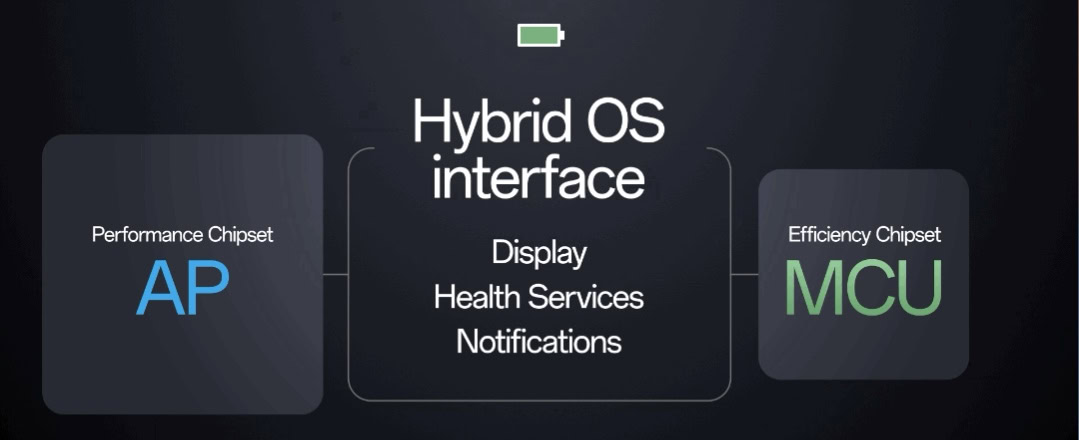TL;DR
- Wear OS now offers a new hybrid interface that offloads more tasks to a low-power co-processor instead of processing everything on a more powerful main processor.
- The new OnePlus Watch 2 uses this new hybrid interface with a dual-chipset architecture to offer battery life that exceeds two days of heavy use.
If you’ve been a long-time Android user, you’d be aware of how the Android smartwatch experience has evolved over the years. In the early days of Wear OS (previously called Android Wear), the experience was laggy and a big drain on the battery. It wasn’t until recently that Wear OS became a practical recommendation for a wider audience, thanks in part to efforts from Samsung with its Galaxy Watch lineup.
Wear OS is on a path to even better experiences, as Google has now shed light on the new hybrid interface that Wear OS is leveraging. We see this hybrid interface on devices like the newly launched OnePlus Watch 2, which uses a dual-chipset architecture (Qualcomm Snapdragon W5 Gen 1 chip with BES2700 co-processor) to deliver more than two days of battery life without compromising on the user experience.
Google says that Wear OS smartwatches that have a dual-chipset architecture include a powerful application processor (AP, aka the main processor) and a secondary low-power microcontroller unit (MCU, aka the co-processor). The main processor handles complex tasks, while the co-processor is leveraged for more routine tasks.
What Wear OS’s hybrid interface does is allow for intelligent switching between these two processors and enables the main processor to be suspended when not needed to preserve battery life. The co-processor can handle tasks when the main processor is not invoked, such as processing health sensor data.

OnePlus is using the APIs available through this hybrid OS interface to offload the processing of notifications and phone calls to the co-processor without compromising on abilities like quick replies. Google says even fitness tracking functions can be offloaded to the co-processor, and the main processor is only woken up periodically for updating apps. Even watch faces built through Wear OS 4’s Watch Face Format can be offloaded to the co-processor.
All in all, these changes to Watch OS help create a smartwatch experience that is a lot more battery efficient, enabling multi-day battery life, without needing app developers to deviate from recommended practices. While the OnePlus Watch 2 has a big battery, we hope to see other smartwatches in the future that can achieve comfortable all-day battery life in more stylish and thinner form factors.
"interface" - Google News
February 27, 2024 at 03:41PM
https://ift.tt/CYL1xMU
Google details how Wear OS's new hybrid interface works on the OnePlus Watch 2 - Android Authority
"interface" - Google News
https://ift.tt/lxfDkPJ
https://ift.tt/BDM8FAH
Bagikan Berita Ini














0 Response to "Google details how Wear OS's new hybrid interface works on the OnePlus Watch 2 - Android Authority"
Post a Comment